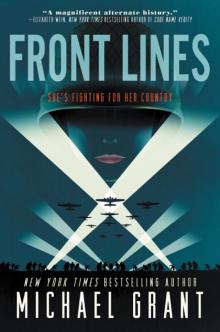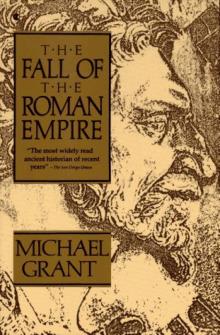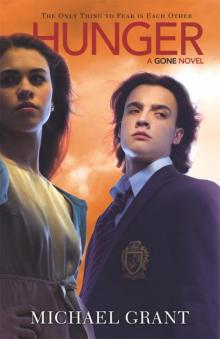- Home
- Michael Grant
BZRK Origins
BZRK Origins Read online
EGMONT
We bring story to life
First published by Egmont USA, 2013
443 Park Avenue South, Suite 806
New York, NY 10016
Copyright © Michael Grant, 2013
All rights reserved
www.egmontusa.com
www.gobzrk.com
Library of Congress Cataloging-in-Publication Data is available
Library of Congress Control Number: 2013946129
eISBN: 978-1-60684-537-0
All rights reserved. No part of this publication may be reproduced, stored in a retrieval system, or transmitted, in any form or by any means, electronic, mechanical, photocopying, or otherwise, without the prior permission of the publisher and copyright owner.
v3.1
For Katherine, Jake, and Julia
Contents
Cover
Title Page
Copyright
Dedication
Plath
Chapter One
Chapter Two
Chapter Three
Chapter Four
Chapter Five
PLATH
I should destroy this. There’s no such thing as secure data. Once a thing is written it will somehow escape. But I can’t. I never knew my father wrote anything about himself.
Mr. Stern recovered this from a laptop my father once used. A long time ago, now. Or seems a long time ago to me.
This was his story. Mine, too, though at the time I understood almost nothing of what was happening. But this is how … well, it’s at least part of how everything began.
My father, Grey McLure. Burnofsky. Lear. Even Caligula. It’s all here. And I could trash can it all, wipe it clean. Except that these are my father’s words, and he’s talking about my mother and my brother. And he’s talking about me. And I find now that every word is infinitely precious.
Soon secrecy won’t matter. Soon very little will matter. But love will matter as long as anything. And I loved my dad.
I am Plath. My enemies have come to fear that name, and I revel in their dread.
But once I was just Sadie. Sadie, who loved her dad.
ONE
I am not a brave man.
I am not well armored against fear. Fear now rules my world, or perhaps I should say fears plural, unless you believe that all fears are only one fear, the big one, the fear of death.
I don’t believe that. To me, fear is granular. Fear is specific. Each fear has its own smell and taste, its own picture and face.
The great fear for me now is not death. The great fear is madness. The death of a creature smaller than the periods on this page can drag me down, helpless, like being sucked into a whirlpool.
I fear that madness. I fear it so badly that I shake from it as I write this.
The things I have seen. The things I have seen. And touched, though not with my own hands.
We live in a series of comforting illusions, beginning with the illusion that we are a human; a singular, separate, and discrete object called a human. We say, “That’s a man, or that’s a woman,” and we mean only the parts that are undeniably human, and not any of the bits and pieces that live on or in that human.
We are not, any of us, a singular object. We are an ecosystem. We are a Brazilian rain forest of life.
Some of us may understand this intellectually; we may hear the statistics about how we have more bacterial cells within us than strictly human cells. We may even make a disgusted face when we hear that fact. But that kind of fact? A bit of math? A line of data? That’s nothing to give a sane man sweaty nightmares. That’s nothing to twist his every notion of reality.
There are facts, and there is truth, and the two are not always quite the same. Facts are dry. The truth is sometimes soaked in blood.
My wife is dying. Her name is Birgid. Mine is Grey. Grey McLure.
Our son, Stone, is trying to play the stoic, and maybe he really is able to master his emotions, I don’t know. I’ve never been a great father to him. I don’t know him as well as I should. What is he now, thirteen? Hah, I’m not sure unless I do the math. Yes, thirteen. I should know that.
I’m closer in some ways to my daughter, Sadie. She’s only twelve, on the verge of becoming a woman, an old soul, a smart, perceptive girl who watches her mother waste away and demands to know why.
Why is this happening?
Sadie is angry, looking for someone to blame.
Both kids are old enough to understand about cancer, but their understanding is almost poetic. Cancer as demon. Cancer as foe. But they have not seen what I have seen. They have not touched it. They have not walked on the surface of that tumor. They have not seen the capillaries turning to the tumor like flowers turning to the sun.
The capillaries welcome the tumor, did you know that? My wife’s own body, her own blood vessels, feed the monster within. Like slaves rushing to a murderous master. It’s an act of self-destruction, cancer is. It is the body’s own mindless suicide.
And you may think you grasp that, but like my children, you see it only in the abstract. It’s an idea to you. It’s a dry fact. But it is not yet truth for you.
Walk on the surface of a tumor and then …
I created the technology. I created it, you see, but I am not a brave man and never wanted to use it. I thought it was a job I could outsource. I thought there was time.
My great work. My brilliant work. It opened up a whole new world for me. A world of madness and terror and red, red truth.
“The Armstrongs won’t budge on biological,” Karl Burnofsky said. We were in his kitchen. Burnofsky had a daughter named Carla, a little older than Sadie, younger than Stone, I think. Carla—a terrible name for a little girl, I thought. Karl was brilliant, a true genius. But not very imaginative when it came to things like naming children.
His wife had left him long ago, and he’d raised Carla in his own fashion: a grubby apartment that stank of cigarettes and whiskey. He could afford better; he worked for Armstrong Fancy Gifts, and they paid him well. He just didn’t care.
So his kitchen was a dimly lit maple table like something one’s grandparents might own, and greasy drapes filtering gray light from the air shaft outside, and dishes in the sink and a trash can overflowing with Starbucks cups and takeout containers. The whole place smelled of ashes, trash, and good whiskey.
Despite (or perhaps because of) his bad habits, Burnofsky was all loose skin over jagged bones. Not an ounce of fat. His daughter was pretty without being beautiful and had striking blue eyes. Her father’s eyes, I suppose, though his were bleached-out and bleary. It was impossible to imagine a young Burnofsky. He was probably my age but looked twenty years older. We’d known each other for years, worked together at times.
“There really are Armstrongs at Armstrong Fancy Gifts?” I asked. He’d told me before, but the ins and outs of a company that made souvenir snow globes and such didn’t interest me.
“Oh, there are Armstrongs, all right,” Burnofsky said. He smirked and seemed about to say more, but stopped himself. He lit a cigarette and shoved his chair back so he could lean his elbows on the table. There was a bottle of Macallan 12 between us. Burnofsky always had good booze. “I thought I might be able to get some supplemental funding for your biologicals approach. Not happening.”
I sprang my big surprise on him. “Turns out I don’t need it.”
He had Gandalf eyebrows, and they rose an inch. “You found a financial angel?”
I nodded. “Yep. They’ll own twenty percent of McLure Labs, and thirty percent of Meldcon sales, but they have deep pockets. And they’ll let me buy them out down the road.”
Meldcon was the reason anyone wanted a piece of me. It was a genetically engineered medicine that could be added to ot
her meds to cause them to bind closely with bacteria. It was the next big weapon in the war on bacteria.
Burnofsky seemed irritated by my news and hid it poorly behind a drag on his cigarette. Then he shrugged and poured us each an inch of the Scotch. We drank to McLure Labs and financial angels.
“I have some news of my own,” Burnofsky said. “Looks like I solved the power storage issue.”
At that point we both whipped out our tablets, and the conversation devolved into pure tech-speak. Burnofsky was building something he called a “nanobot,” a very tiny machine he proposed to use in medical research, a tool that would allow us actually to enter the human body without incisions. Sort of like a laparoscopic camera but much smaller and thus able to go places where no long tube would reach. At that point his models were about the size of a grain of sand—bigger than he wanted them to be. Why the Armstrong Fancy Gifts Corporation should be interested in such a thing I did not know. And Burnofsky’s work was not some poorly funded hobby. Hundreds of millions of dollars were being poured into it.
I was naïve in those days. I fell for the innocuous name and never so much as Googled the company. I could have easily discovered that Armstrong Fancy Gifts had gone way beyond the ubiquitous airport gift shop chain they still owned.
“Once we solve the comm issues we’ll have functioning nanobots,” Karl said in summarizing our little kitchen table geek-fest.
“I thought you were pleased with what you’d done on that.”
“Mmm,” he said, nodded, and took a drink. “But I want more range. I want a kilometer.”
That brought me up short. There was no conceivable manufacturing or medical use for nanobots that would require communicating with them over that kind of distance.
“Why so much? Even in some exotic medical application you can always just arm the patient with a signal repeater. A one-meter range would be more than enough. The power demands go up astronomically if you want a one-kilometer range.”
He changed the subject then. And I would have normally reflected on that moment and seen very quickly what was being contemplated. But that was the night I came home late, smelling of smoke and booze, and crawled into bed to find Birgid crying.
That was the night she told me about her lab results.
“Is Mom going to die?” That was Stone’s question.
Sadie’s question was, “How soon will she die?”
Want to know why Sadie posed it that way? Because even then she was a thoughtful person, and she had already absorbed the fact that all of us die. Her question was specific. It assumed death and asked for a date.
Later that night Sadie came to me in my library. Birgid was upstairs getting ready for bed. Stone was watching TV.
“I looked it up on the Internet,” Sadie said.
I didn’t need to ask what she had looked up.
“There are all kinds of treatments. But none of them work, do they?” She was calm. Not emotionless, but calm.
“Not very well, no,” I admitted.
She had just started developing the freckles she would keep from then on. They seemed inconsistent somehow with her solemn expression.
“You have to not worry about me and Stone,” she said. “You just have to help Mommy.”
“I’m going to do everything I can to help Mommy,” I said. “You know, your dad is a scientist. This is what I do.”
That sounded very hollow, and Sadie must have thought so, too, because she ignored it.
“Take care of Mommy,” she reiterated. “I’ll take care of Stone.”
I smiled. “And who takes care of you?”
“I take care of me,” she said.
TWO
After that first trip inside, I couldn’t touch Birgid.
I loved her with all my heart, or at least as much as I am capable of loving anyone, but I couldn’t touch her. I could barely stand to be in the same room with her.
The whole world around me was alien. I was alien. My God, I thought: I must never go inside myself like that, or I wouldn’t be able to go on living.
The disorientation was like nothing you can imagine.
You cannot unsee once you’ve seen.
I wondered if my extreme reaction was unique to me, but my biot tech, Donna, later had the same experience. Worse in some ways. She stopped coming to work, and later, after it all went down and I sent my security chief, Stern, to see what had happened to her, he said he’d found her in her apartment, rocking back and forth and making sounds like a cat purring.
Of course, she had lost her biot, and we didn’t know then what that meant.
Stern reported to me on what he’d found. Her carpeting had all been ripped up off the floor and tossed into her backyard. There was plastic over everything. There was Purell everywhere. She had a box of respirator masks and was wearing two, one on top of the other.
She had wrapped her hands in Ziploc bags secured with duct tape.
She had shaved all the hair off her head, face, and body.
By that point I understood. But it was too late to help her.
My financial angel invested a billion dollars in McLure Labs. They invested in me, in Meldcon, in a promising antiviral agent we were testing, and in the fact that I had attracted half of the best young minds in biotech and genetic engineering.
They knew nothing about the little side project I’d earlier hoped would get AFGC support. I had become fascinated by Karl’s work on miniaturized machines—nanobots. And I began to wonder if a biological solution might not be superior. Not a tiny machine, but a tiny creature.
Needless to say, I had to obscure what I was doing. It is illegal to create new life-forms, new species. And yet, that’s what I proposed to do. It would cost a fortune and take years just to get FDA approval even to begin such a venture, and the oversight and regulation might be crippling.
So I had gone ahead on my own. With every possible safeguard. The new species would be incapable of reproduction: that was the greatest safeguard. Each biot—that was the name I stuck with—had to be grown by man. Grown in a lab. I hoped to program them to perform limited functions—to move within the body and cut away blood clots, for example, or to attack tumors by delivering chemotherapy directly on-site.
I had no idea then what would happen. I will go to my grave saying that I had no idea the goddamned things would be linked to their creators. I had no idea of the madness that would follow.
When I learned of Birgid’s cancer diagnosis, I handled it admirably. I was sympathetic, of course. I made optimistic noises. I talked of fighting it with her. But I am a man of science, so I quickly researched the survival numbers for her particular lung cancer at this particular stage. And the fact is, she would be dead in a year.
She had access to those same numbers, Birgid, and she was not a fool.
“We need to plan,” Birgid said. “For when … The kids, we need to plan, you know.… It’s not fair to them.… Jesus, I never even smoked.”
She didn’t cry. I did.
“I may have a way,” I said. “My God, look what I do for a living, I have the resources.… I can try at least.”
“Try,” Birgid said. But she didn’t believe I could do it. She did not believe I could defeat the tumor before it spread and killed her. She was always a practical person. She was … She was everything that mattered to me in the world.
Oh, that’s a lie, isn’t it? Everything that mattered? My children mattered. But my pride mattered, too, and I would be damned if I’d be beaten by some tumor. I was Grey McLure, young genius, rich, handsome, admired, and this kind of thing didn’t happen to men like me.
The next day I went to the lab and started. I assembled my best and brightest, pulled them off other projects, drafted them into my quest to perfect the ultimate cancer killer: the biot.
We had recently made significant advances in what we inelegantly called “Mix-n-Match DNA.” Using very sophisticated computer programs, we could predict with a great degree of accuracy the re
sults of combining strands of DNA from different animals.
Our first thought experiment was called Merman. It was a reference to the classic movie The Cabin in the Woods. We were able to use Mix-n-Match to combine human DNA with elements of sturgeon and codfish. Of course we didn’t create an actual Merman, but we could have. With a few more tweaks we could have created an actual one, a human/fish hybrid with functioning gills and a fish’s tail. It could have survived in cold water. It would have been mentally impaired and be nearly blind, but still.…
We didn’t. But we thought about it. I remember an after-work party, someone’s birthday, I suppose. I remember sitting at some bar with Donna, Jasmine, and Prim, and talking about it. About the whole playing God, Frankenstein thing. Another few beers and who knows?
Now, though, it was not fun and games. Now I was enlisting my people in a criminal enterprise. They couldn’t resist the lure of the research any more than I could, and the scientists who balked at crossing those lines? I gave them other work.
I was also defrauding my financial angel, who expected me to be doing useful work.
The biot would be useful, if it worked, but useless, too, since its very existence had to be concealed. If it worked, we would have a tool of amazing power … that no one could ever know about.
It was Jasmine who said, “Dr. McLure, could we not give the creature something analogous to a stinger, or snake’s tooth, some capacity to carry a drug or even an acid of some type to use against the tumor?”
And that’s why we brought in cobras to supply us with DNA.
It was then that a couple of things fell into place. Because of course I realized that if the biot could be designed in such a way as to deliver drugs, well, why not actual venom? Why not bacteria? The biot, in short, could be weaponized.
Which I realized in a flash was what Burnofsky must be doing with his nanobots. That was why he wanted a one-kilometer range. It wasn’t necessary if what you were doing was sending nanobots to kill tumors. But it might be very useful if you were sending them to kill.

 Fear
Fear Plague
Plague BZRK: Apocalypse
BZRK: Apocalypse Bzrk
Bzrk Love Sucks and Then You Die
Love Sucks and Then You Die Silver Stars
Silver Stars The Key
The Key Front Lines
Front Lines BZRK Origins
BZRK Origins Monster
Monster Gone
Gone The Snake
The Snake The Power
The Power Hunger
Hunger Lies
Lies A Sudden Death in Cyprus
A Sudden Death in Cyprus Messenger of Fear
Messenger of Fear Eve & Adam
Eve & Adam The Trap
The Trap Light
Light An Artful Assassin in Amsterdam
An Artful Assassin in Amsterdam The Call
The Call Hero
Hero Soldier Girls in Action
Soldier Girls in Action Purple Hearts
Purple Hearts The Tattooed Heart
The Tattooed Heart The Fall of the Roman Empire
The Fall of the Roman Empire BZRK Reloaded
BZRK Reloaded Messenger of Fear Novella #1
Messenger of Fear Novella #1 The Magnificent 12
The Magnificent 12 Fear: A Gone Novel
Fear: A Gone Novel Villain
Villain Manhattan
Manhattan Eve and Adam
Eve and Adam Plague: A Gone Novel
Plague: A Gone Novel Fergie Rises
Fergie Rises In the Time of Famine
In the Time of Famine Hunger_A Gone Novel
Hunger_A Gone Novel Lies g-3
Lies g-3